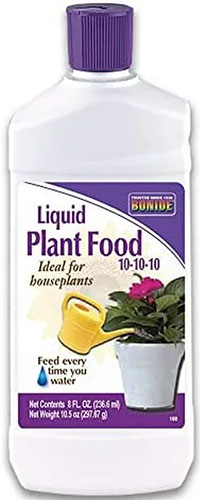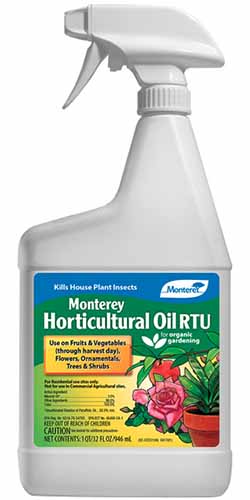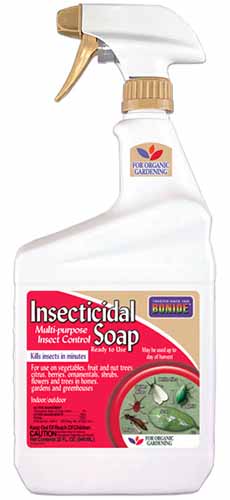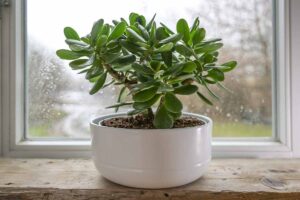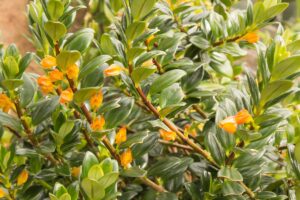Ficus maclellandii
“Indoor” and “tree” aren’t two words that always go well together, but I’d say that the banana leaf fig makes it work.
A tall, woody plant that stands apart from your typical small and herbaceous houseplants, Ficus maclellandii can make a powerfully pretty statement in your home.
Add banana-shaped leaves and the fig moniker to the mix, and it may even have your stomach rumbling a little.
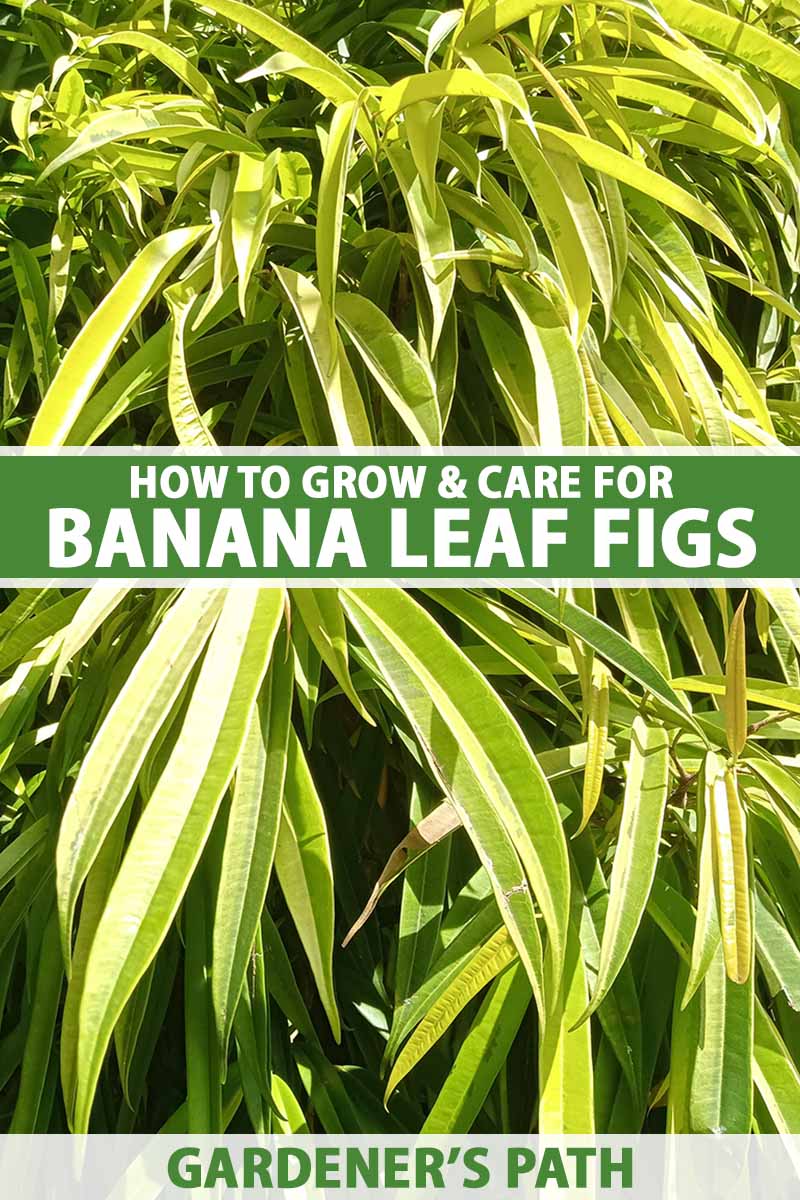
We link to vendors to help you find relevant products. If you buy from one of our links, we may earn a commission.
Whether it’s a visual accent in your indoor jungle or the star of the show, the banana leaf fig is simply radiant.
But no matter how you utilize this plant, you’ll need to know how to cultivate it properly. We wouldn’t want such a pretty plant to pass on without reaching its aesthetic potential, now would we?
Our guide will walk you through the basics of banana leaf figs: their propagation, cultivation, maintenance, and more. Hopefully, you’ll find it a-peel-ing, cringey banana puns aside.
Here are the specifics:
What You’ll Learn
What Are Banana Leaf Figs?
The banana leaf fig – aka F. maclellandii – is a member of the Ficus genus, which contains over 900 species of shrubs, trees, and vines.
Hardy in USDA Zones 9 to 11, banana leaf figs hail from east India, Bangladesh, south China, and much of southeast Asia.
In the wild, they are found growing in wet, tropical to subtropical environments.
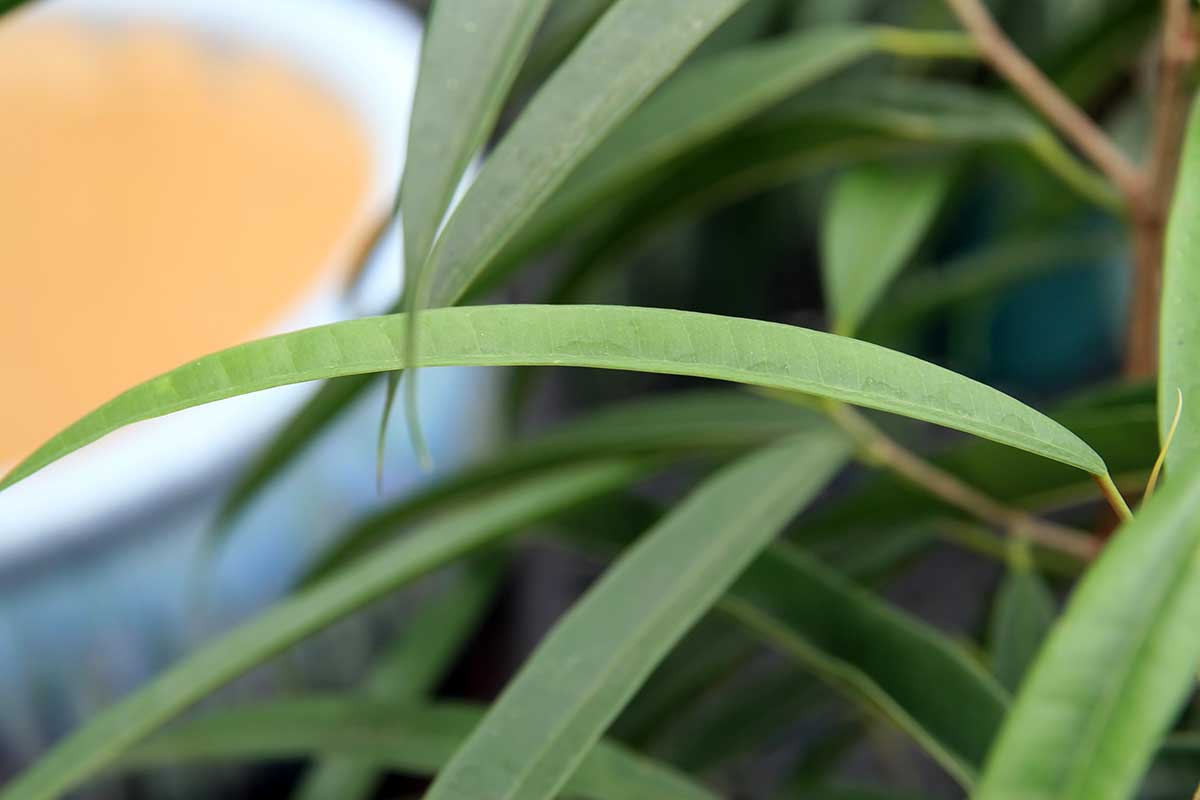
Banana leaf figs form trunks of smooth, light brown bark with distinct lenticels. This species is a member of the “strangler figs,” a group of epiphytic Ficus plants that can kill their hosts.
They establish themselves around the trunk of a host tree, put down terrestrial roots while dispatching the host, then continue to grow independently where the host used to be as a self-supporting, tubular trunk. Talk about brutal!
But don’t think that you have to choke out one of your beloved trees just to grow a banana leaf fig, though. They can grow just fine in the ground or a container without a host.
With a growth habit that becomes more rounded and tree-like as it matures, F. maclellandii typically tops out at six to 10 feet tall and four to six feet wide when grown indoors in a container. But in its natural outdoor habitat, it can grow 40 feet tall and 30 feet wide!

Banana leaf figs flaunt simple, spirally-arranged, leathery, glossy, dark green, and lance-shaped leaves that grow about eight inches long and one and a half inches wide.
I’d say that F. maclellandii foliage looks more like banana fruits rather than true banana leaves, although banana-ness is in the eye of the beholder, I suppose.
As a Ficus species, F. maclellandii bears pairs of small green figs from leaf axils in spring, which turn yellow to red as they mature.
Within each fruit is a hollow syconium: a type of inflorescence with small flowers that face inwards towards the empty space in each fruit. Kinda like a geode, but with flowers instead of dazzling crystals.
In nature, specialized fig wasps lay their eggs within the syconiums, pollinating the flowers as they do so. Seed set will not occur without this partnership between fig and fig wasp, which is why banana leaf figs are effectively sterile in foreign environments without their pollinators.
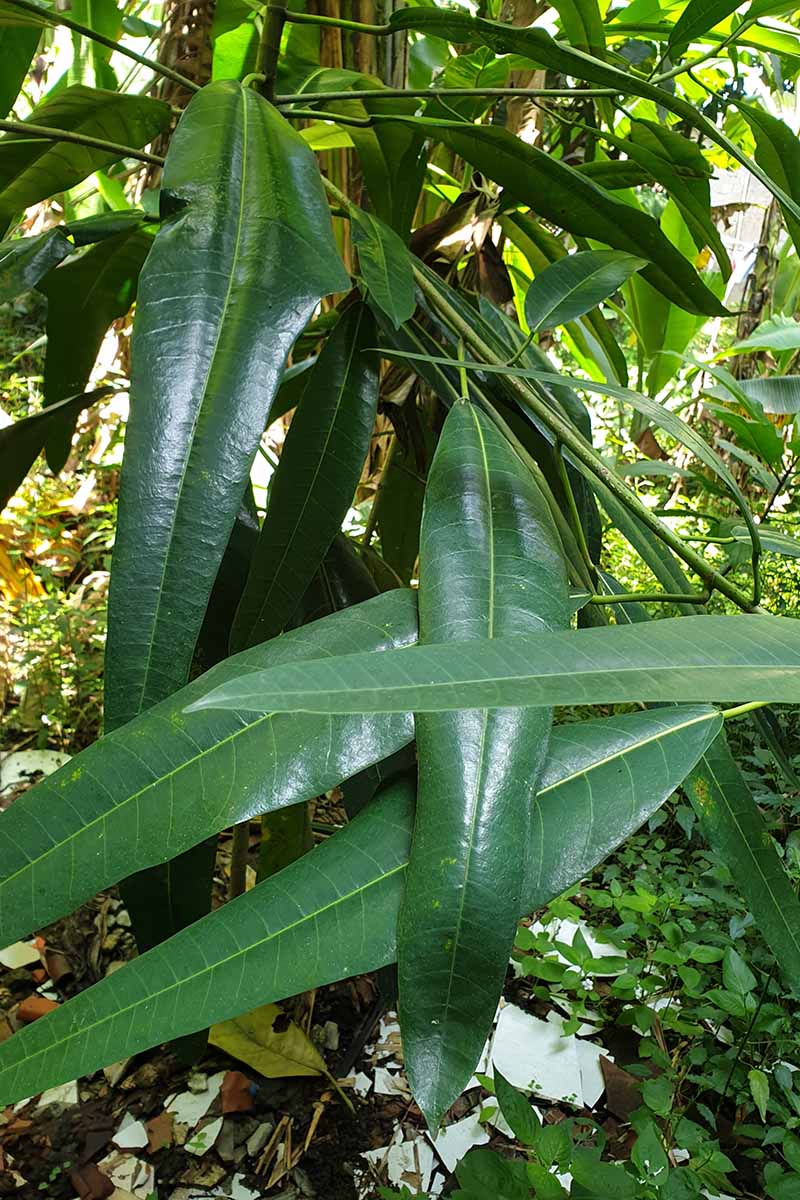
If pollination does occur and seeds form within the fruits, then the seeds will be spread via animals such as birds, bats, and terrestrial mammals as they eat the figs, move elsewhere, and excrete the undigested seeds.
A word of warning: handling the fruits, leaves, and sap barehanded can leave you with contact dermatitis, so always wear gloves and exercise caution!
Banana Leaf Fig Propagation
Unless you can telepathically control fig wasps that you’re okay with having indoors, I wouldn’t try to grow these plants from seed.
Taking stem cuttings, air layering, or simply transplanting a young start would be my go-to’s for propagation.
From Stem Cuttings
Use a sterilized blade or pair of hand pruners to remove six-inch cuttings from the terminal ends of healthy-looking shoots.
Don’t forget to wear a pair of gardening gloves to protect your hands from the sap!
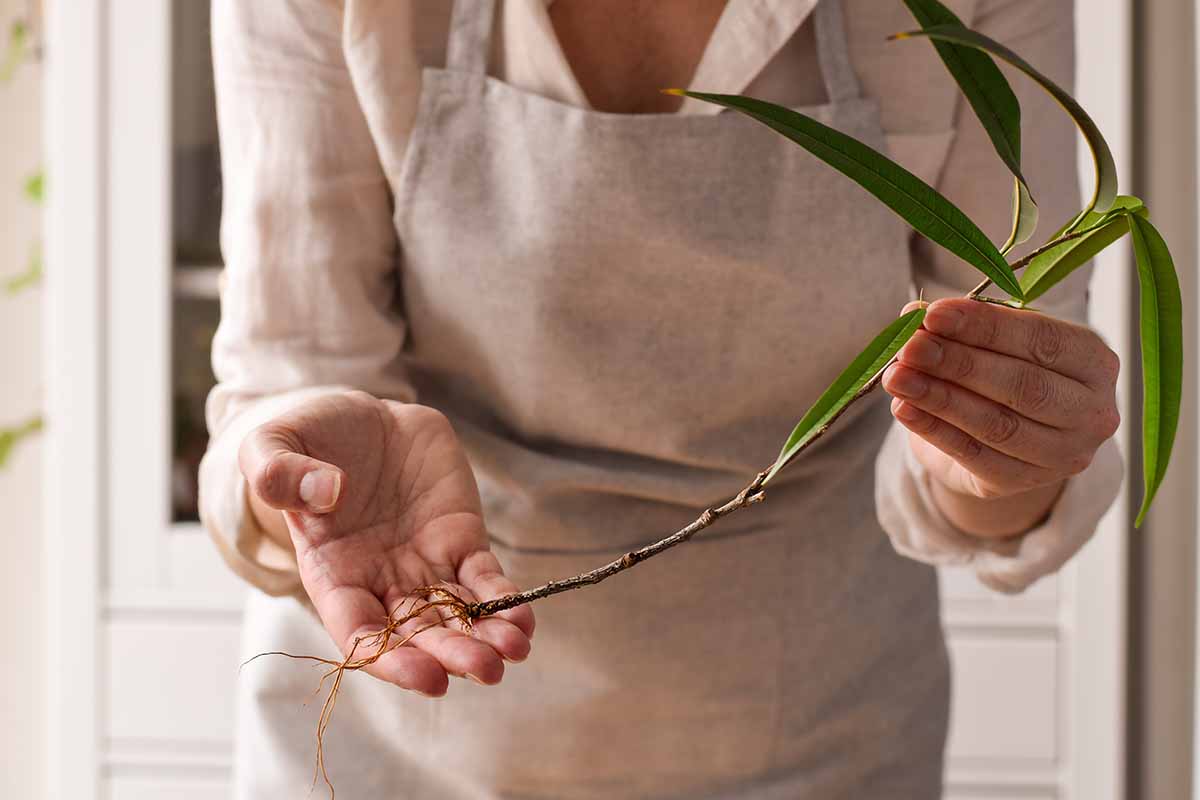
After defoliating the bottom third of each cutting, scrape off the bark from the bottom inch of each cutting and dip it in a rooting hormone like Bonide’s IBA powder from Arbico Organics.
Stick your cuttings two inches deep into six-inch pots containing a 50:50 mix of perlite and peat moss or coconut coir. Moisten the media, cover the cuttings with clear plastic baggies, and set the pots in bright, indirect light indoors.
Still keeping the media evenly moist, yet not waterlogged, remove the humidity covers once roots have formed – which should take about four to six weeks.
Continue with your care, and once the plants begin to outgrow their containers, they’ll be ready for transplanting into their new homes!
Via Air Layering
Air layering is a simple propagation technique for houseplants, or any plants with shoots that are too tough to bend and layer normally.
Rather than bending branches down to soil, air layering brings soil up to the plant!
Select a section of stem 12 to 18 inches away from its tip. With a sharp knife, make two cuts around the stem spaced one inch apart, along with a vertical slit connecting the two. Then, peel away a ring of bark, leaving a one-inch section of barkless wood.
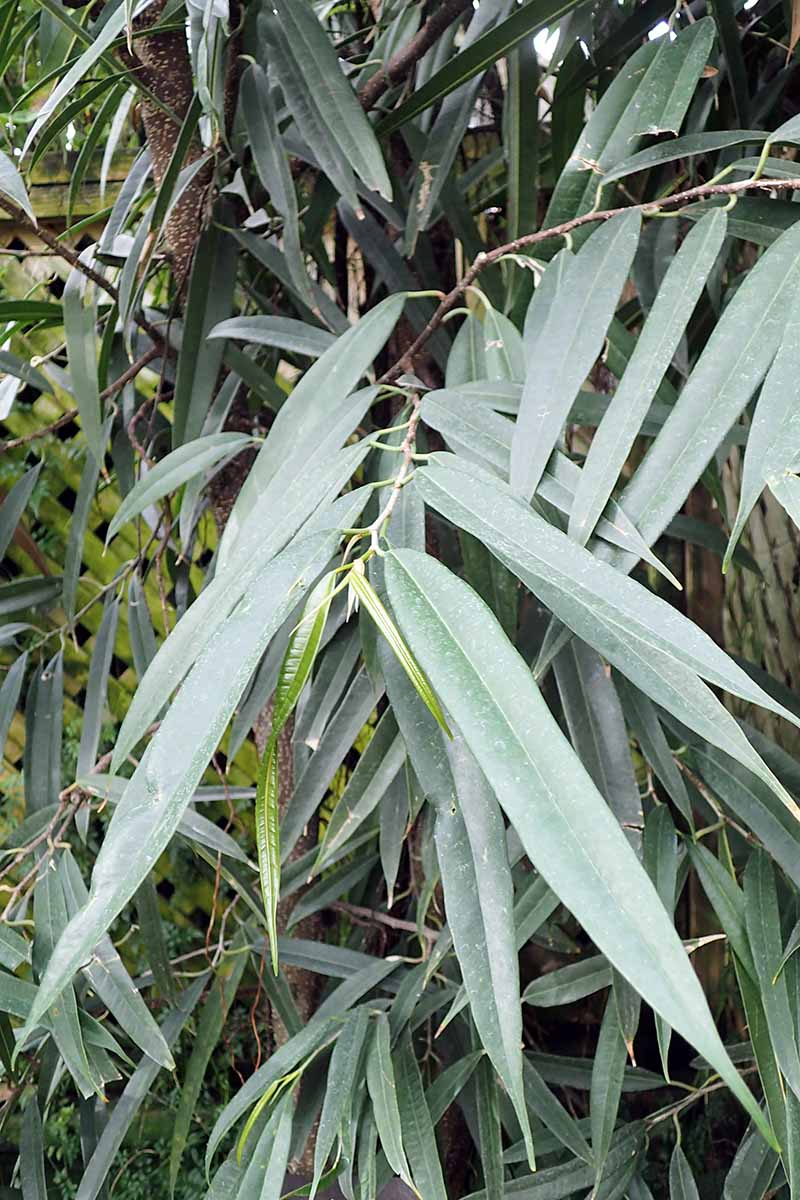
Powder the wound with rooting hormone, clump a handful or two of moist sphagnum moss around the wound, then wrap it all up in clear plastic or aluminum foil.
Secure the ends with electrical tape or twist ties – they’ll need to be easily un-secured for later watering.
Keep the moss moist while roots form, which could take six to eight weeks or longer. Once the roots are several inches long, separate the new plant from its parent, just under where the rooted wound ends. From here, it’s transplanting time!
Transplanting
Once you have your propagated plant or purchased nursery start, prepare a sturdy container with drainage holes that’s an inch or two wider than the transplant’s root system.
Fill it with a moisture-retaining, yet well-draining growing medium – something like Miracle-Gro’s indoor potting mix, which you can find via Amazon.

Miracle-Gro Indoor Potting Mix
Then, dig a hole deep enough to fit the transplant’s root system, and make it just a bit wider so you’ve got room to work.
Remove your transplant from its container, gently ease it into its new container, then backfill it with dug-out soil.

Water it in, set it near a window to receive bright, indirect light, and you’re good to go!
How to Grow Banana Leaf Figs
Now that your banana leaf fig is potted up, let’s discuss how to keep it happy in its new indoor digs.
Climate and Exposure Needs
As a specimen hardy in USDA Zones 9 to 11, the banana leaf fig certainly prefers heat over the cold.
So as a houseplant, it’ll appreciate a temperature range of 60 to 70°F. If you’re a utilities-conscious thermostat-tweaker, then a broader range of 50 to 80°F is acceptable.

The typical household humidity should suffice, as these plants aren’t too picky.
But you may want to keep your specimens away from AC units, heaters, drafty spots, or any other place where temperatures can change on a dime.
For F. maclellandii, bright, indirect light from an east- or west-facing window is the name of the lighting game.
Soil Needs
A growing media that can retain moisture, yet allow excess water to drain is ideal.
Ensure that the media’s pH is somewhere in the 5.0 to 7.0 range, and you’re golden.
Water and Fertilizer Needs
Constant, even moisture is optimal for banana leaf figs.
To provide this without going overboard and making the potting soil soggy, allow the top inch of media to dry out before you water again.
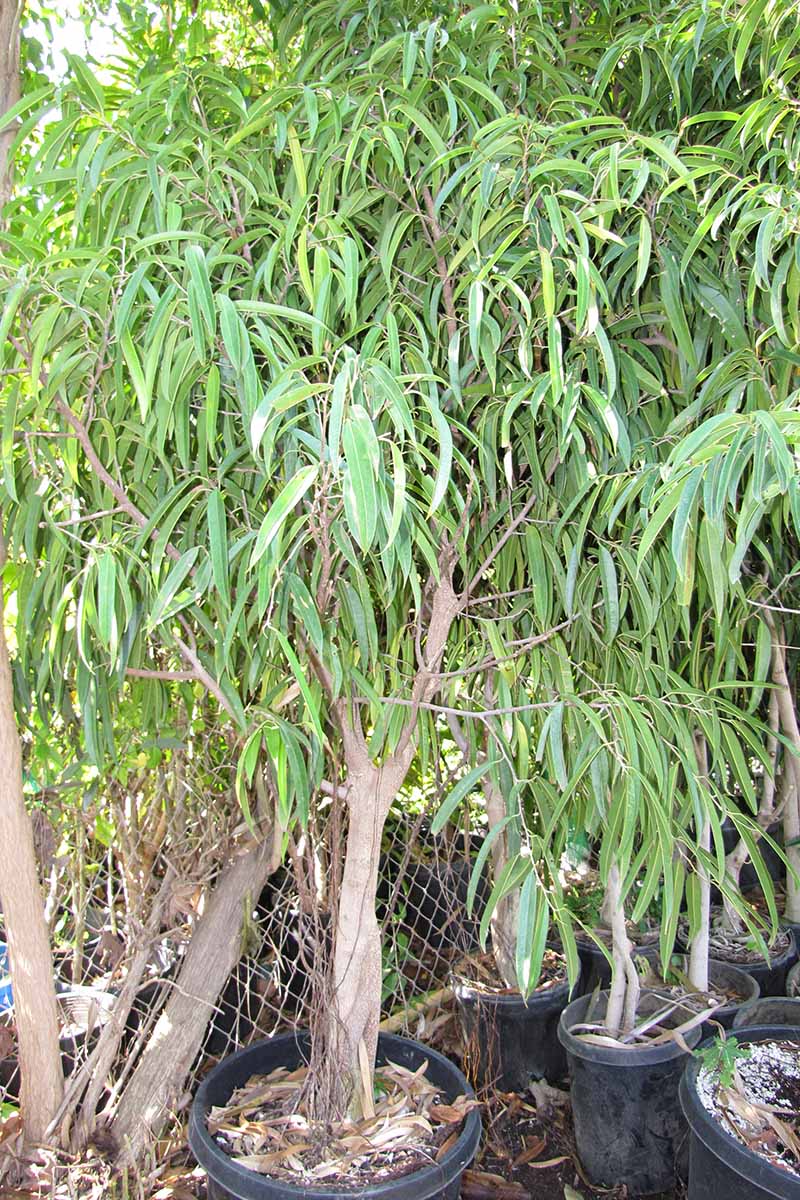
Once a month throughout the spring and summer, an application of balanced fertilizer really hits the spot.
You’ll want to hold off during the fall and winter months, when the plant is dormant though.
Need fertilizer? Check out Bonide’s 10-10-10 liquid plant food, available at Walmart.
Growing Tips
- Be sure to provide bright, indirect light.
- The growing media should retain moisture, yet drain away the excess.
- Deeply water whenever the top inch of soil dries out.
Pruning and Maintenance
As your banana leaf fig grows big and strong, it’s going to become rootbound… unless you repot it.
Once your specimen loses that inch of space between its roots and the container, then it’s time to size up. Make sure you use fresh potting soil and ensure that the new pot is not excessively large – one size up will do the trick.
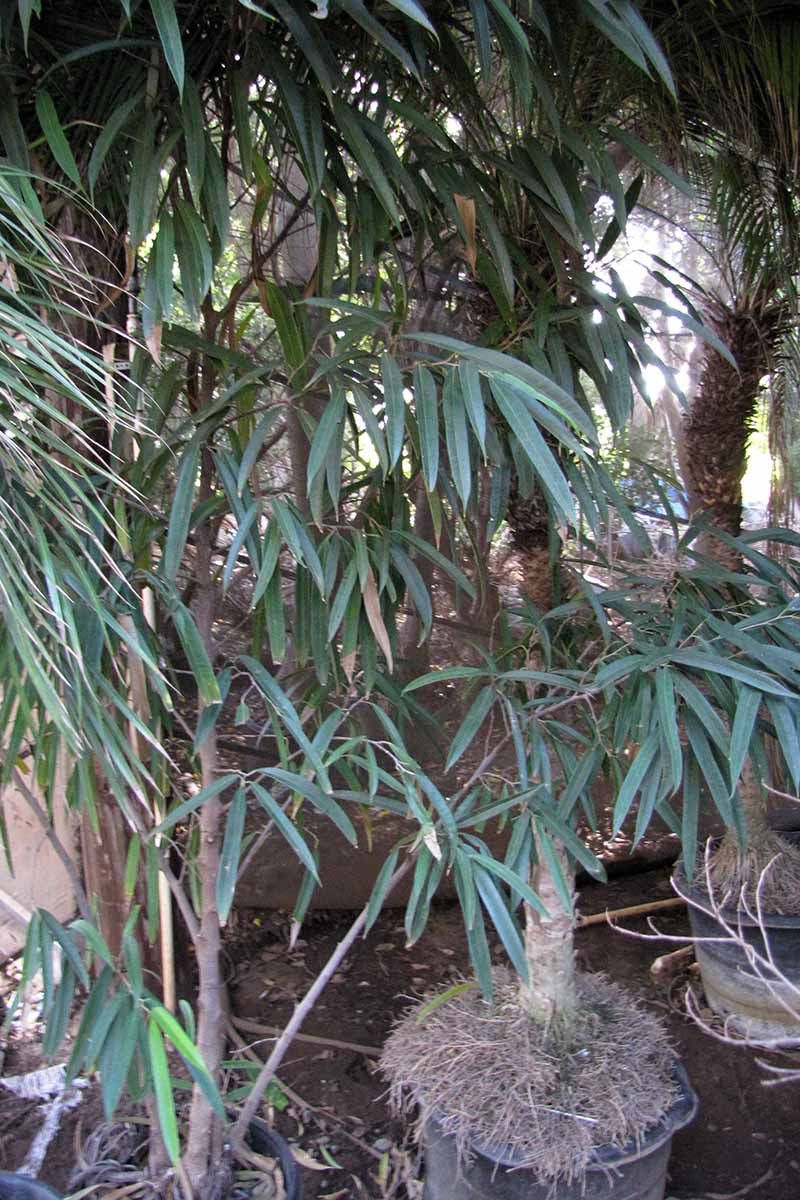
If you wish to set your plants outdoors during the summer months, they can go outside when temperatures consistently reach 50°F or higher.
Make sure to bring them in when the temperatures threaten to drop below that. They can survive in lower temperatures, but they won’t have as quite as many lush leaves.
As an evergreen plant, your banana leaf ficus won’t drop its leaves in fall. But to keep things looking lush, you should prune away any dead, diseased, damaged, and otherwise unhealthy-looking leaves and branches as you notice them.
If any healthy branches happen to throw off the aesthetic, then feel free to ax those as well.
If fruits appear, remove them to keep the plant looking sharp. These figs aren’t the awesomely edible kind, and they’ll detract from the foliage and eventually drop if they’re left on the plant.
Don’t forget your gloves when working with this plant!
When growth slows during dormancy, your plant will naturally use up less water as its transpiration rates decrease, so your watering frequency will go down, as well.
Always check the top inch of media for dryness before irrigating.
Banana Leaf Fig Cultivars to Select
Banana leaf figs aren’t in super high demand for their fruits or landscaping applications, so there aren’t a large number of cultivars available. However, there are a couple that are worth noting.
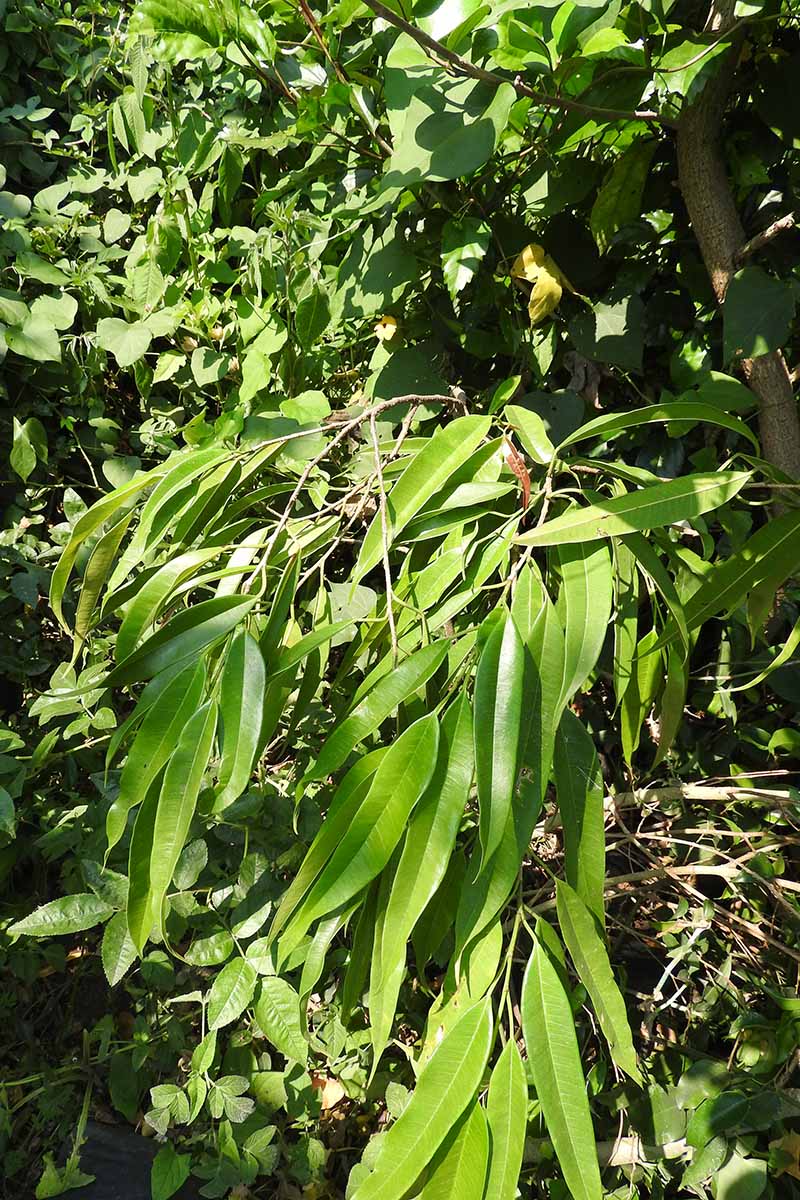
Take ‘Alii,’ for instance. First grown commercially in Hawaii – ‘Alii’ actually means “king” in Hawaiian – this cultivar has become the specimen you are most likely to find available for purchase.
So if you have a banana leaf fig that you’ve purchased from a public vendor, chances are it’s an ‘Alii.’
You can find F. maclellandii ‘Alii’ with a braided trunk that’s three- to four-feet tall available at FastGrowingTrees.com.
You can choose from a white or beige decorative pot as well.
Other cultivars include ‘Amstel-veen,’ ‘Amstel Queen,’ and ‘Amstel King,’ which are broader-leaved versions of the standard species.
With those larger leaves come a greater surface area for conducting photosynthesis, which in turn comes with a tolerance for lower light!
Managing Pests and Disease
Granted, the home is typically more sanitary than the outdoors, but health problems can still occur, especially if you receive specimens that are already infested or infected.
Here’s how to handle some common issues:
Insects
As potential vectors of disease, insects can be a double whammy of awful. But on the flip side, managing them can solve two plant problems for the price of one!
Mealybugs
Congregating in clumps on stems and leaf undersides, mealybugs have pink and segmented bodies beneath their mealy white coatings.
Waxy deposits on the stems and foliage will often become apparent before the actual pests do.
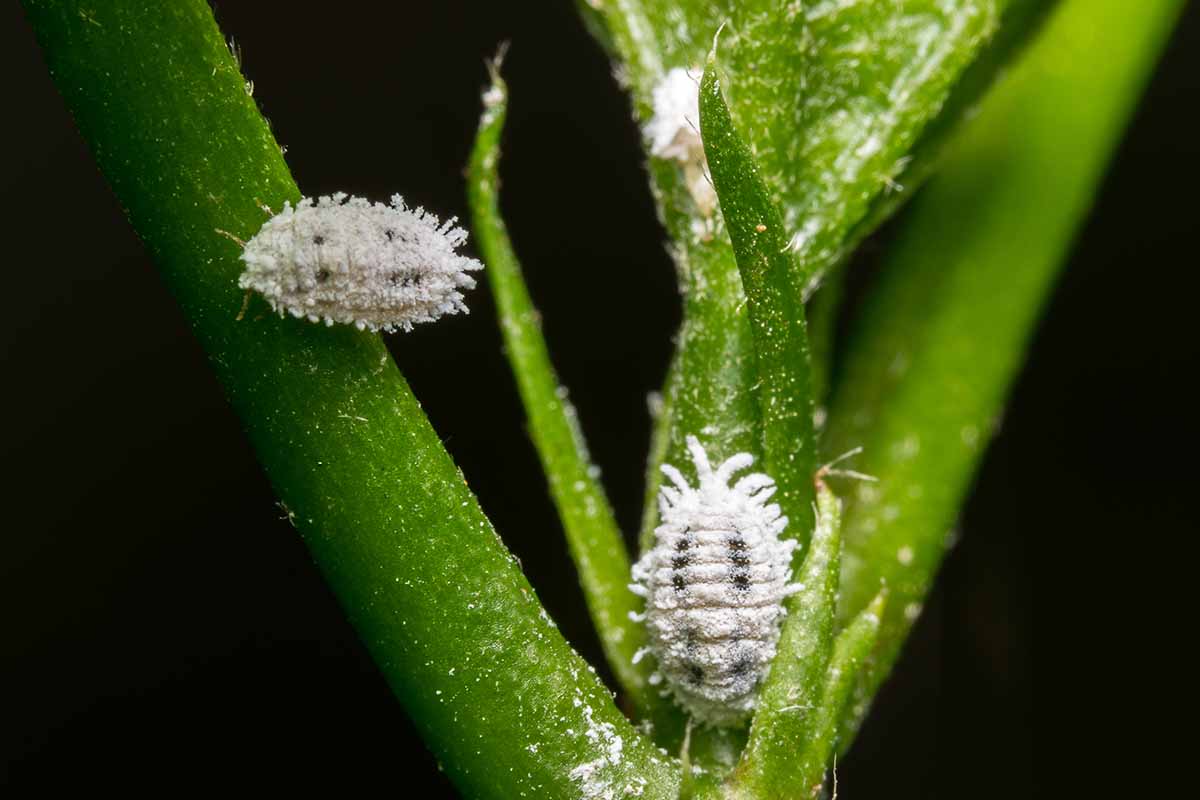
With their piercing-sucking mouthparts, they extract vital fluids from leaf tissues, which can leave infested plants with chlorosis, stunted growth, dieback, or even plant death.
As they feed, they excrete honeydew, which can result in black sooty mold. It can even attract ants, if you happen to have an ant problem.
High-velocity spays of water can physically knock exposed mealybugs off of plants – you might want to do that outside, though.
Sprays of horticultural oil or insecticidal soaps will actually kill these pests. For Monterey’s OMRI-listed horticultural oil, visit Arbico Organics.
For more information about mealybug management, check out our guide.
Scale
Scale insects are round, flattened, and come in either soft or armored forms.
Amassing in groups and with no visual legs, they actually do look like lizards or fish scales, or perhaps something you’d want a dermatologist to freeze off with liquid nitrogen.
Scale use similar mouthparts as mealybugs to feed from of plants, which can cause leaf yellowing, drop, and reduced vigor. They also excrete honeydew.
Horticultural oils and insecticidal soaps can also control scale.
They’re really affixed onto plant surfaces, though, so strong agua sprays won’t cut it here – try plucking them off with a toothpick, or perhaps scraping them off with a dull butter knife.
Bonide offers some multi-purpose insecticidal soap at Arbico Organics.
Spider Mites
Far tinier than mealybugs or scale, spider mites are barely visible – to the naked eye, they just look like moving red dots. But if you break out a hand lens, you’ll see itty-bitty red arachnids.
Often accompanied by conspicuous webbing, spider mites leave tiny, stippled feeding marks on infested leaves. In time, the damage can progress to choloris, necrosis, or even leaf drop.
Strong sprays of water should physically remove spider mites, while horticultural oils will actually put them down.
Spider mites still got you down? Our guide has even more tips.
Disease
Using sterile gardening tools and selecting disease-free plants from the get-go will go a long way towards preventing disease.
Botrytis Blight
Also known as gray mold, botrytis blight is a condition caused by several different species of Botrytis fungi.
You’ll recognize this disease by the softened brown spots that form on leaves and stems. Additionally, strands of fungal mycelium will move from infected to healthy tissues, spreading the disease throughout the plant.
It generally infects plants kept in overly damp conditions, caused by overwatering or poorly draining soil.
If this disease does strike, make sure to promptly quarantine your plant. Disease spread can be halted with sprays of fungicides, while severely stricken plants should probably be pitched.
Root Rot
Caused by suffocated roots due to over-saturated soils, root rot is an abiotic condition that can eventually kill the plant. Thanks to a root system that’s effectively drowning, the foliage and stems can turn chlorotic, necrotic, and eventually perish.
Root rot can be prevented, halted, and potentially reversed with proper watering practices. Remember: let the top inch of soil dry out between waterings.
For a plant with root rot, it can be helpful to remove it from its container and trim away any completely rotted roots. If more than half of the roots are rotted then the plant is probably a goner.
We go into more detail on treating root rot here.
Best Uses for Banana Leaf Figs
If you’re looking for an indoor tree that thrives in brightly lit spots, then a banana leaf fig really does the trick.
Bursting with thin, lush leaves, this plant is simultaneously dense yet open, in a way that’s quite aesthetic.
You’ll never miss out on viewing the leaves, either – they hang downward, making it near impossible to avoid a glance at their glossy green surfaces.
Quick Reference Growing Guide
| Plant Type: | Broadleaf evergreen perennial | Foliage Color: | Green |
| Native to: | Bangladesh, China, India, southeast Asia | Maintenance: | Moderate |
| Hardiness (USDA Zone): | 9-11 | Tolerance: | Moderate drought |
| Exposure: | Bright, indirect light | Soil Type: | Standard potting soil |
| Time to Maturity: | 10 years (full height) | Soil pH: | 5.0-7.0 |
| Spacing: | 4-6 feet | Soil Drainage: | Well-draining |
| Planting Depth: | Depth of root system (transplants) | Attracts: | Bats, birds, fig wasps, mammals (outdoors) |
| Height: | 6-10 feet | Uses: | Decorative houseplant, potted specimen |
| Spread: | 4-6 feet | Family: | Moraceae |
| Water Needs: | Moderate | Genus: | Ficus |
| Common Pests and Disease: | Mealybugs, scale, spider mites; Botrytis blight, root rot | Species: | Maclellandii |
It’s Easy To Dig the Banana Leaf Fig
It’s tough to not love banana leaf ficus, especially if you appreciate large, shapely clumps of indoor foliage and banana-themed houseplants.
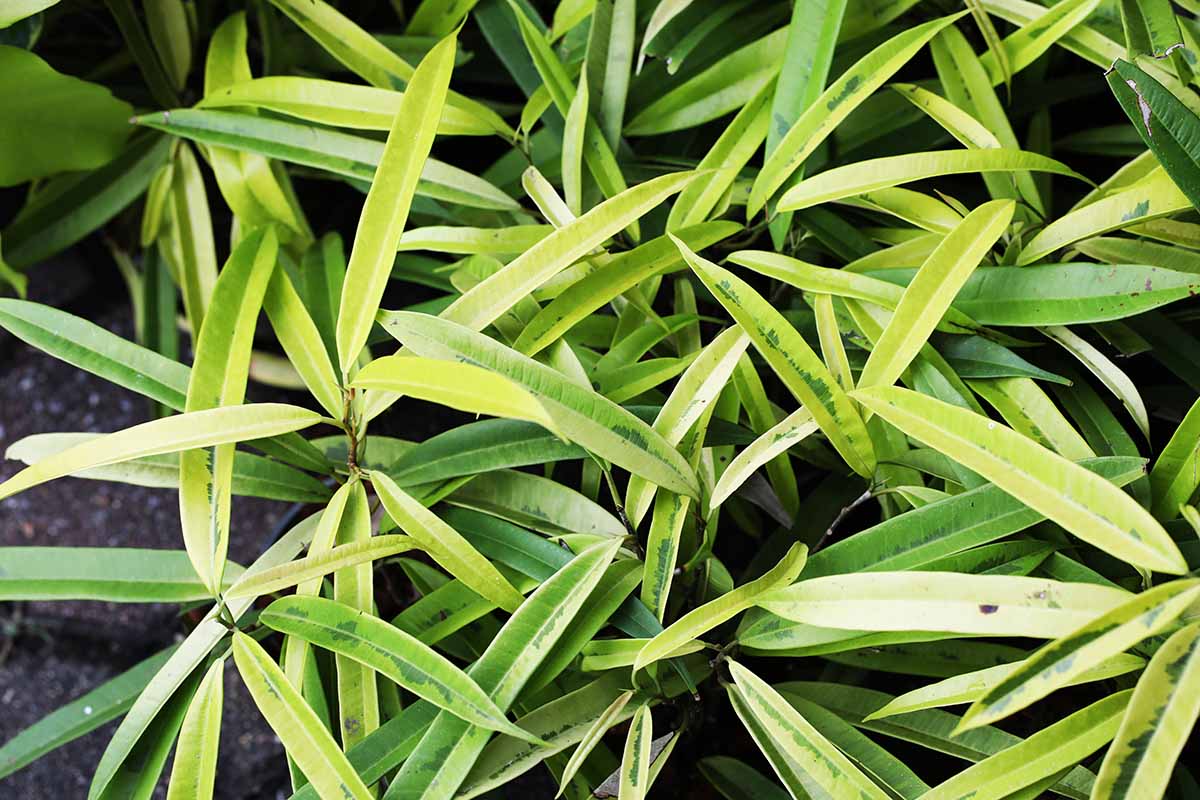
Wherever you put it in your home, you’re sure to cherish the banana leaf fig. Give it the proper TLC, and it’s sure to love you, too. As much as an insentient clump of greenery can, anyway.
Still have questions, comments, or concerns? The comments section is the place to put ’em.
Have a thing for Ficus plants? These guides should help you fig-ure them out:
